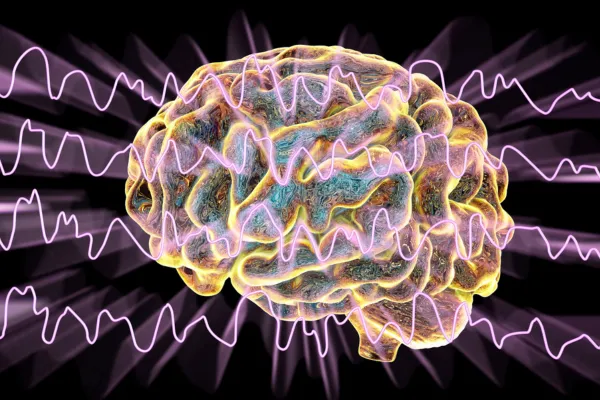
Why Storytelling Is More Important Than Ever!

The only reason I was thin in my 20s was cigarettes and anxiety.
I'd prance to the corner bodega on 46th Street and 9th Ave from my midtown apartment and, with shaking hands, fork over my hard-earned cash to my buddy Abdul in exchange for the whiff of a fresh pack of Marlboro Lights.
"Oh my God, me too!" Elaine shrieked. "I smoked like a chimney."
Elaine got it; she had lived a similar experience. Now even if you never smoked—and good for you, I haven't in years—you still might have been able to visualize what you just read. You might have found a connection to the story in some way.
According to research by Uri Hasson at Princeton University, when a person tells a story and another person listens, their brain activity actually synchronizes. This is a phenomenon they called "neural coupling." Their fMRI studies showed that the same regions of the brain activate in both the speaker and listener with a slight delay of about 1-3 seconds in the listener's brain. Our brains actually sync? I really do geek out on this stuff!
Specifically, when there was good comprehension between storyteller and listener, up to 80% of the same regions in their brains would activate in sync. This includes areas involved in processing language, memory, and emotion.
Why is this meaningful to you? Because this tells you that good storytelling draws you closer to your audience. They begin to feel like the story you are telling them is their own. That creates immediate connection.

Additionally, with rapid technological change, stories play a vital role in preserving cultural heritage and passing down values across generations. They help maintain this human connection in an increasingly digital world.
Where did it start?
Many researchers believe storytelling emerged as a survival mechanism. Early humans used stories to share vital information about dangerous predators and successful hunting techniques. The first stories were about our food! Anyone watch Chef's Table on Netflix? We are still telling food stories! Stories allowed this knowledge to be memorable. It is embedded in our DNA; it is an art form that has been passed down since the beginning of time.
As people face an ever-increasing flood of content and information, compelling narratives help messages stand out and resonate on a deeper emotional level. Stories provide a framework that helps people process and remember information more effectively than raw data or facts alone.
In fact, you are 22 times more likely to remember a fact if it has a story attached. The next time you see someone smoking, you can think, "I'm 22 times more likely to remember that story that Nick told me now."
In an era of AI-generated content and increasing concerns about misinformation, authentic human stories help build genuine connections and trust. Personal narratives and shared experiences create emotional bonds that are difficult to replicate through other means. AI could not create the authentic moment between me and Elaine. Authentic, real, and raw storytelling does.
A thought leader is no longer someone who gives great information; it is someone making true connections with people.
And if we pull back the lens, as global challenges become more interconnected and complex, stories help people understand and relate to difficult concepts. Narratives can make abstract ideas tangible and help diverse groups find common ground through shared experiences.
This is something that is not only more important than ever in 2025—it is vital to our survival.
The Neural Coupling Exercise: Let's Put This Into Practice
Since we've been talking about the science of storytelling and neural coupling, I want to give you a practical exercise to try. This will help you create those powerful brain-syncing moments we discussed.
Memory Mining
Think of a simple daily habit or routine you once had that you've since changed (just like my smoking story). It could be anything—a former coffee ritual, an old commuting routine, or even a past workout habit.
Write down every sensory detail you can remember. What did you see? Smell? Hear? How did your body feel? What emotions ran through you during this routine?
Now comes the magic—transform your memory into something universal that others might relate to, even if they've never experienced your exact situation. Remember how Elaine connected with my smoking story? That's what we're aiming for.
Craft Your Mini-Story
Start with a surprising statement, just like I did about being thin in my 20s. Then, describe one specific moment using your sensory details. Connect your experience to something universal about human nature. End by inviting your readers to reflect on their own similar experiences.
Test Your Story
Share your story with one person and watch for that neural coupling moment we talked about. Ask them what they could most vividly picture and what personal memory it triggered for them. If their eyes light up with recognition—you've done it. You've created that authentic connection that no AI could replicate.
Just like those early humans sharing stories about hunting and survival, you're participating in an ancient tradition of human connection. Your story matters. Your experience matters. And someone out there needs to hear it.
Now it's your turn—what story will you tell?
